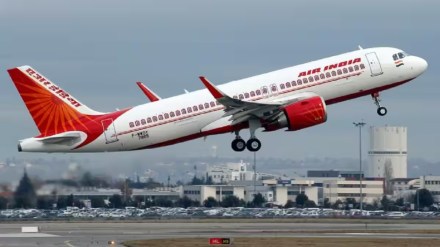When Air India signed on global marketing solutions network McCann Worldgroup last week amid an ongoing scrutiny of its planned merger with Vistara by the Competition Commission of India, the signal was clear: India’s flag carrier is looking at the proposed merger as an opportunity to reinvent Air India, the brand. Nipun Aggarwal, chief commercial and transformation officer for the airline, says the move to sign on a new commmunication partner is in line with its objective to build Air India as a ‘global airline with an Indian heart’. “This is a brand that is close to the hearts of flyers around the world. We expect to transform the brand into one of the most admired and trusted brands in India and overseas,” he says.
Indeed, this is as good a time as any for the brand-agency duo to transform Air India, says KV Sridhar, founder and CCO of HyperCollective, who has worked with airlines like Jet Airways and Air India in the past. He observes the first thing the company needs to do is to change the unsavoury consumer perception of the brand that has allowed the competition to gain share and help it “lose its baggage”, so to speak.
As a brand, Air India has to answer two questions for itself: one, how can it best build on the core brand promise of unparalleled hospitality; two and perhaps more important, whether it ought to hold on to the brand mnemonic of the gregarious Maharaja that has served it well in the past.
Naresh Gupta, co-founder, Bang In The Middle, cautions against it. “The agency should really be communicating a modern image of Air India that is contemporary. The accent should be on the quality of service and hospitality,” he says.
Past versus present
Today’s consumers view air travel more in terms of functionality and not so much as an aspirational experience as it was seen a few decades ago. Competing brands in the category have succeeded by touting a clear functional benefit — such as on-time performance — rather than peddling an emotional high. “Over the last 15-20 years, many customers have walked away from Air India because of issues related to cleanliness, service quality and treatment. The agency’s biggest challenge will be to get customers excited about flying Air India again,” says Gupta.
That said, Sridhar says, the biggest act of omission would be to ignore the core values of the brand — which is unparalleled Indian hospitality.
Considering the airline sector is largely consumer-facing and heavily regulated, service performance is paramount in ensuring continued patronage because just one bad experience can hit a brand badly. Sridhar refers to the recent ‘peegate’ incident, during which Air India’s messy handling of a passenger complaint drove home the point that one single dissatisfied customer can severely affect the image of a brand.
While such scandals do happen for many brands, improving associations must be part of a regular housecleaning regime rather than a mere reaction to a brand’s weakest moment being made public. He says the Maharaja is a mere symbol and there is no real need for it unless McCann finds a way to make it relevant and contemporary, much like the Amul girl.
Meenakshi Menon, communications specialist & founder, Spatial Access, agrees in part. The aviation market is crowded and so the ability to distinguish oneself is of utmost importance, she says. “The Maharaja is something that no other airline can claim. Most other airlines talk about their efficiency and service, or you have low-cost carriers talking about economy. In that context, why should Air India give up a service story that is absolutely theirs? It makes no sense,” she insists. What Air India actually needs to do is make the Maharaja a bit more modern so he appeals to Gen Z consumers as well.
Also let’s not forget that Air India operates in a global market with fliers from all over the world, so all the more reason to stick with something so uniquely Indian. “It’s not just the domestic market. In this era of hyper-nationalism, if Air India gets their act together, every Indian will proudly fly the airline,” sums up Menon.
